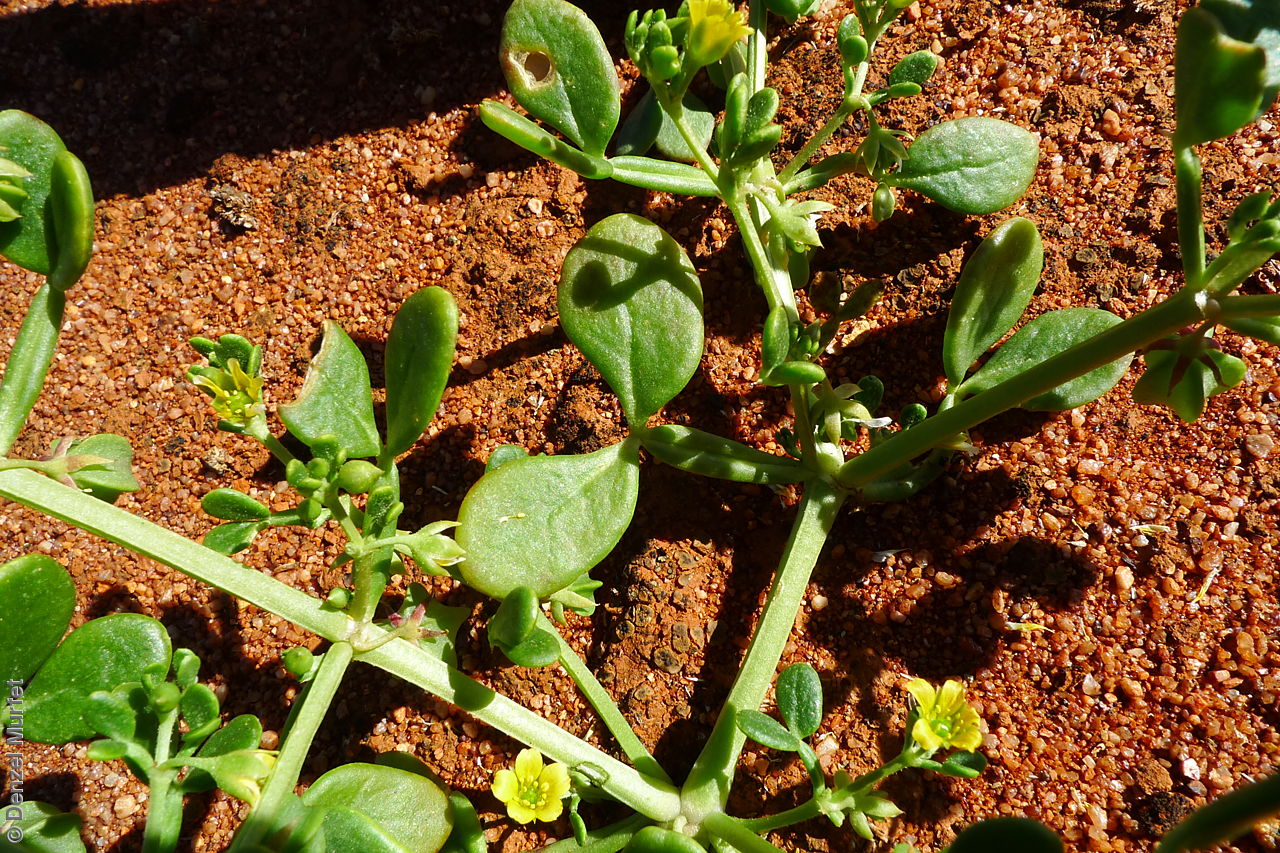
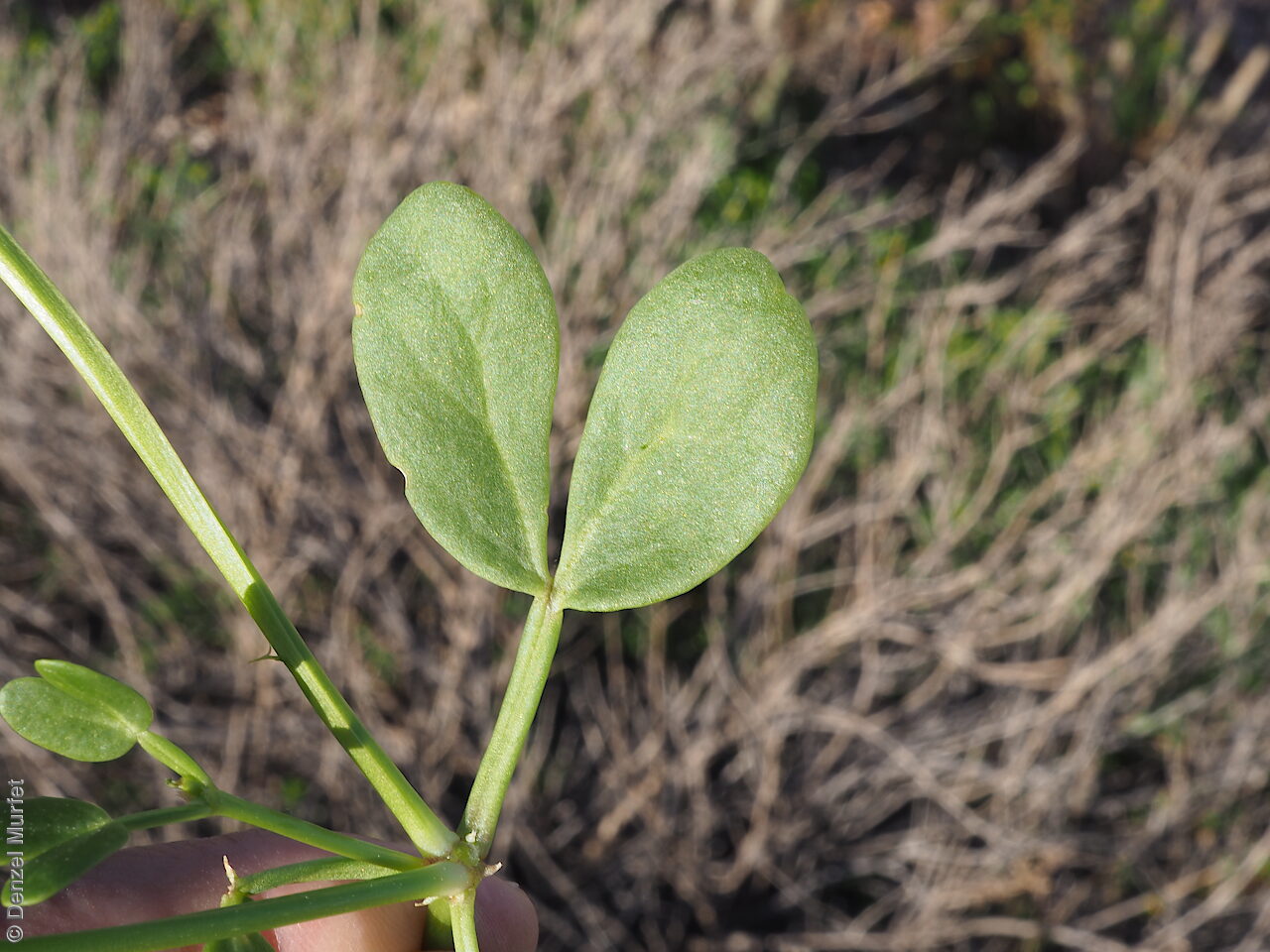
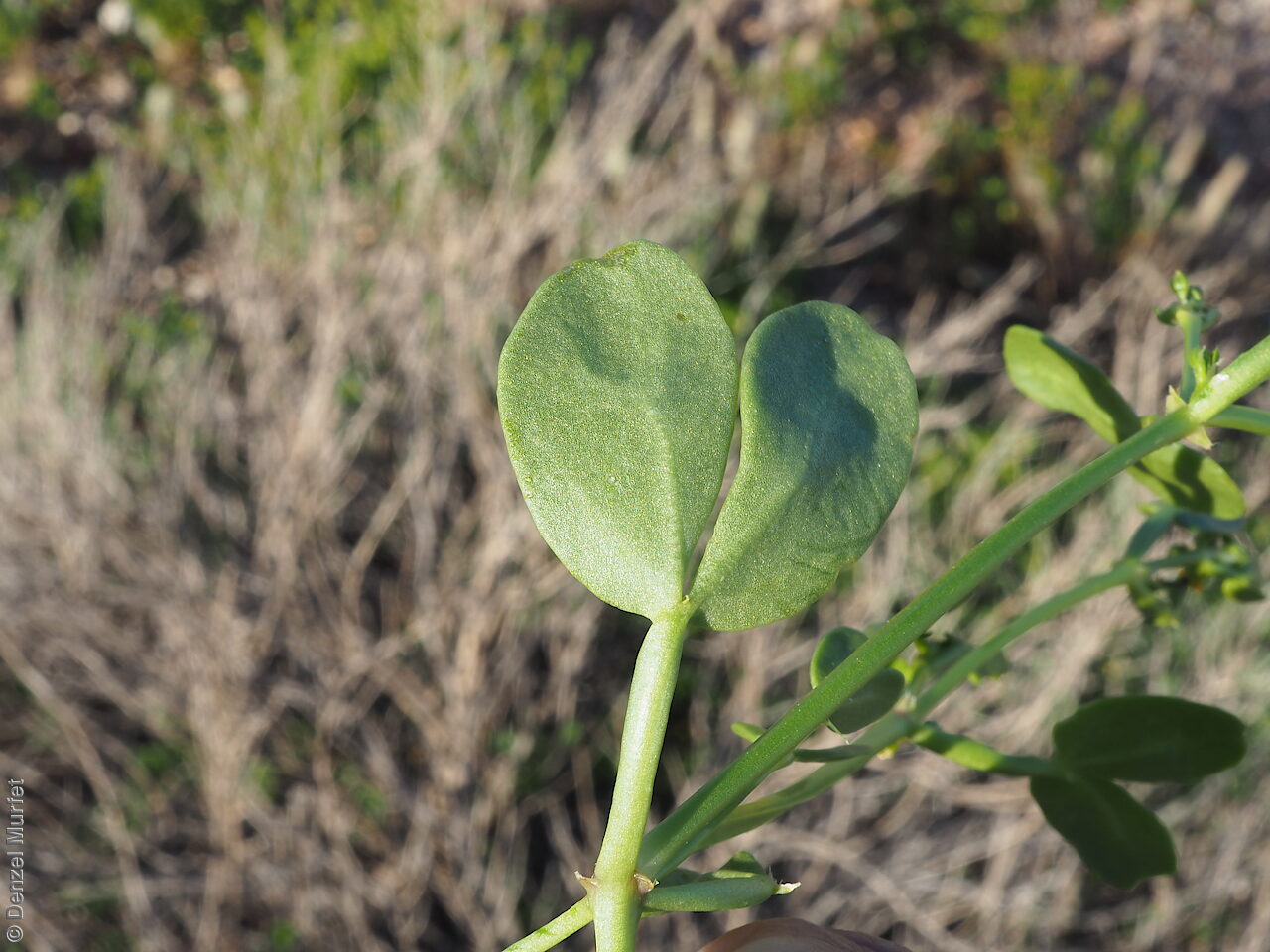

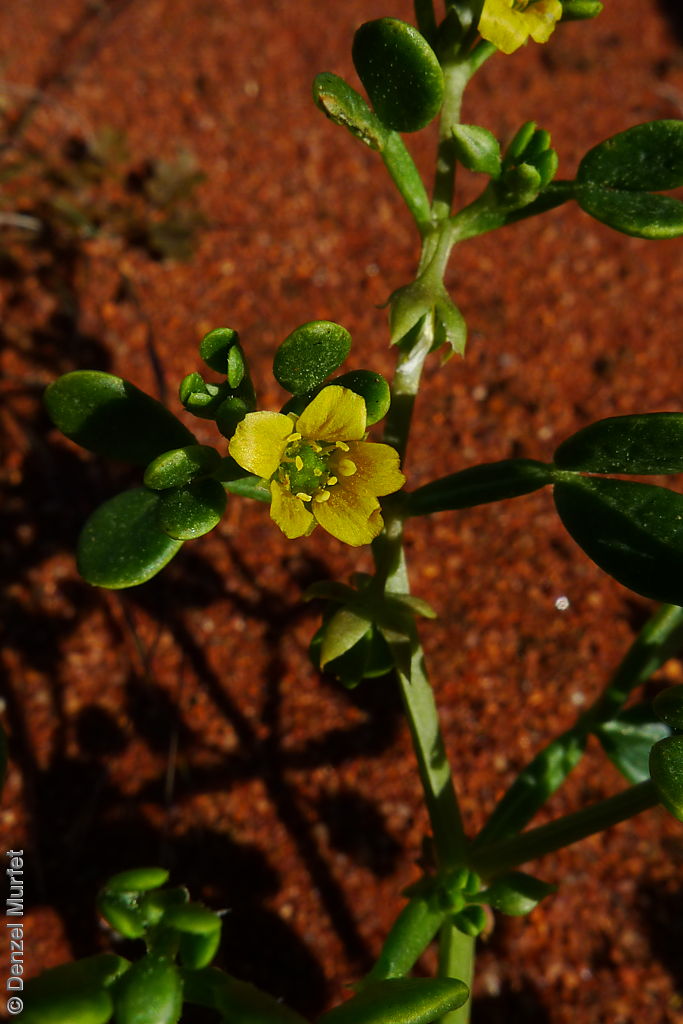
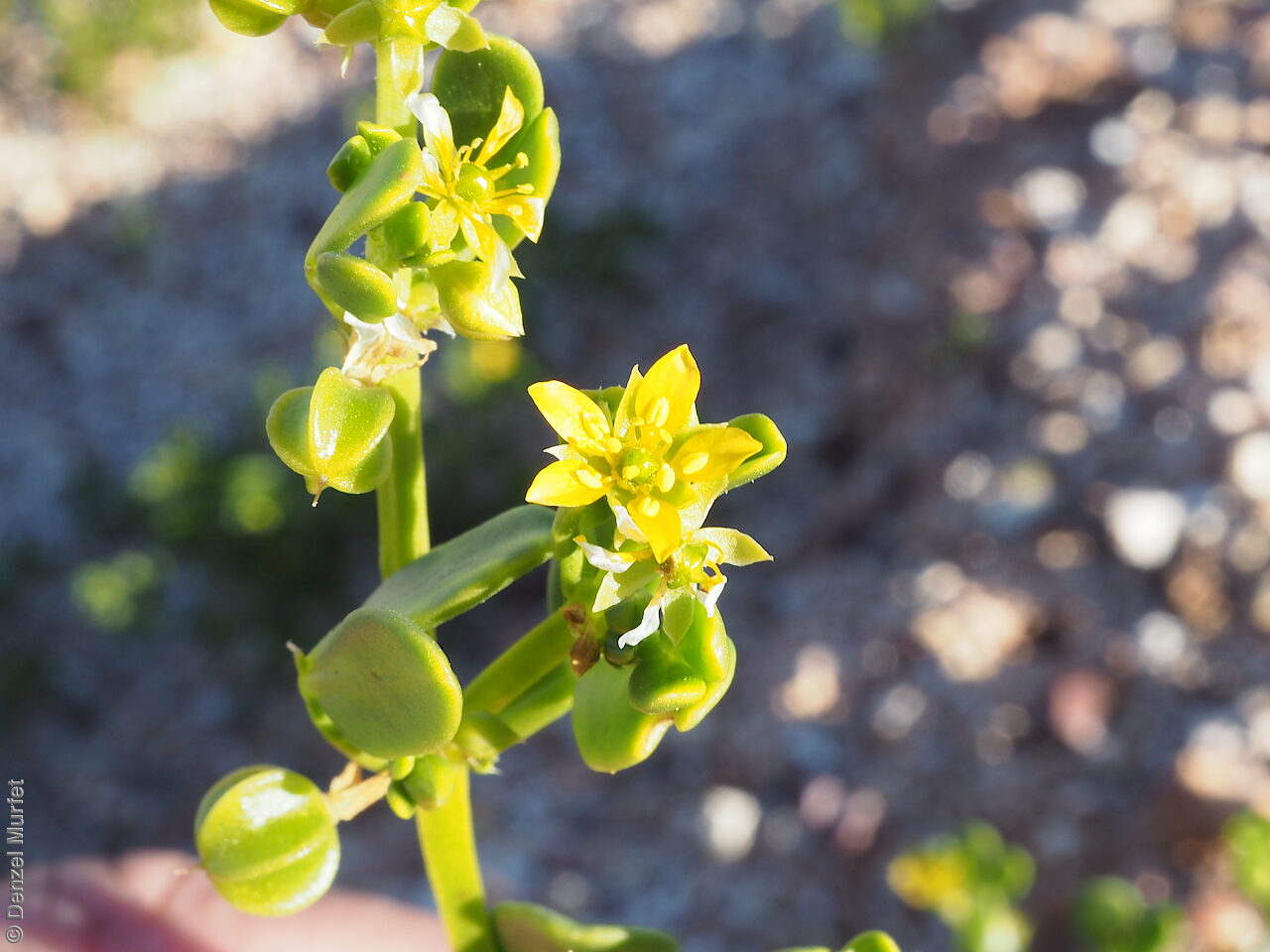
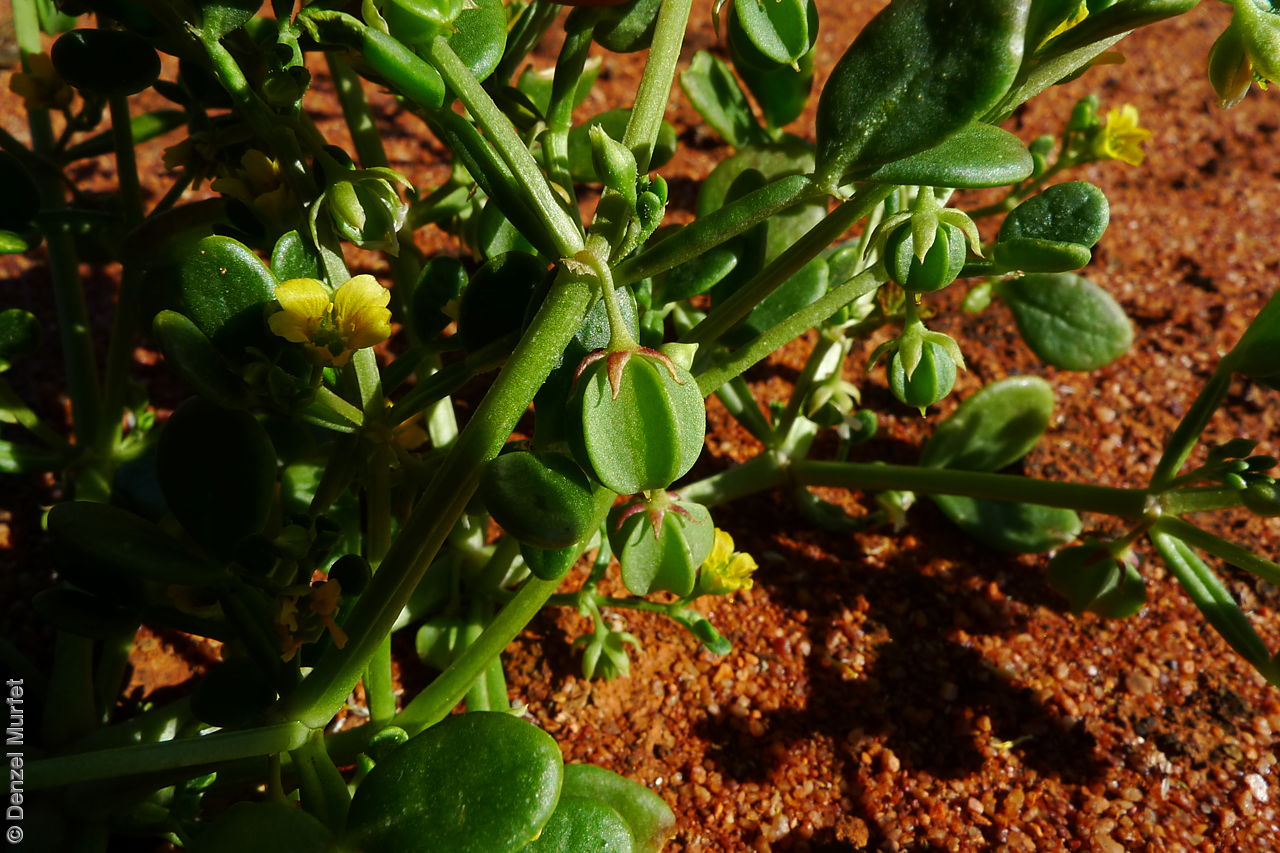

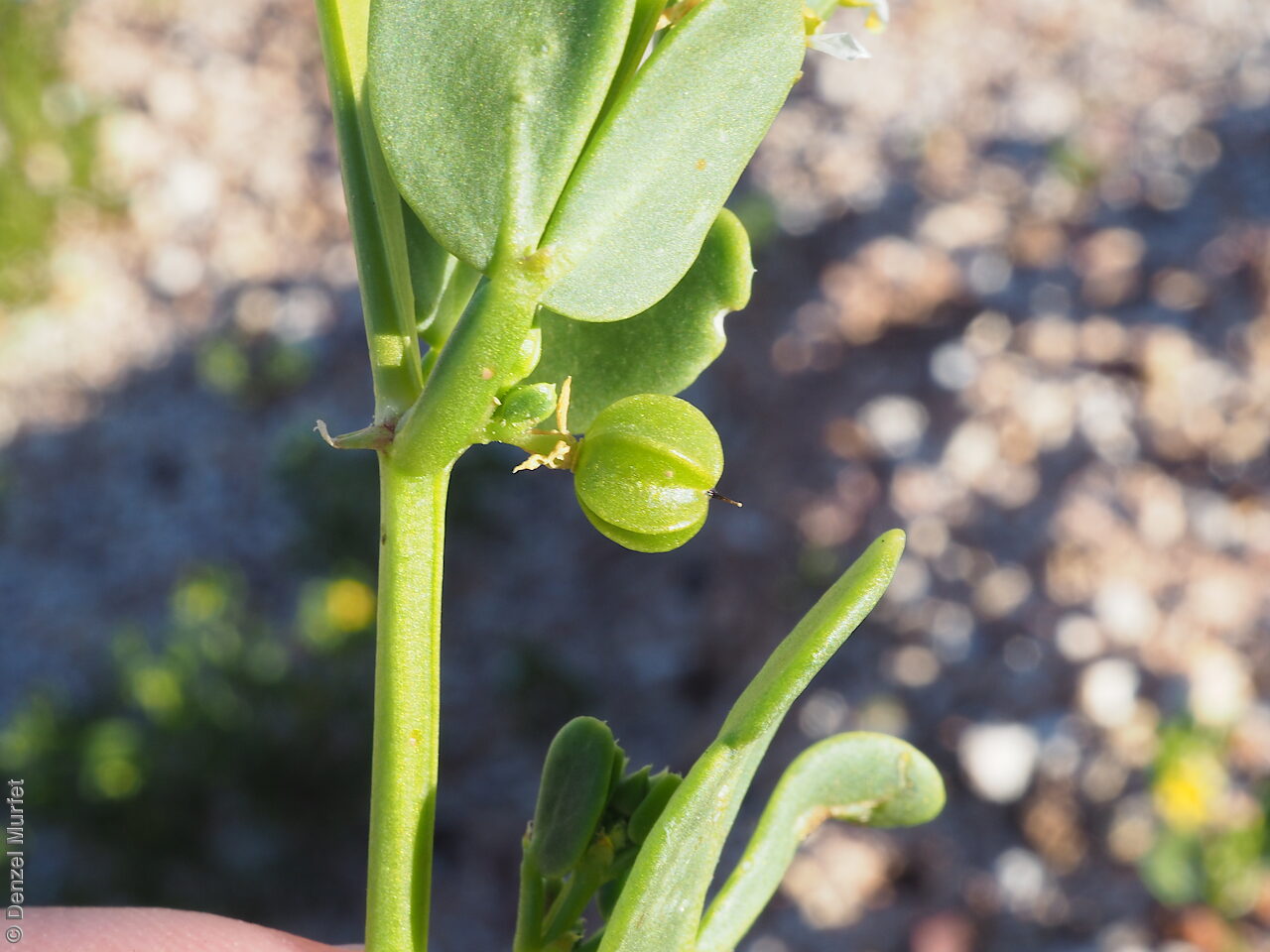

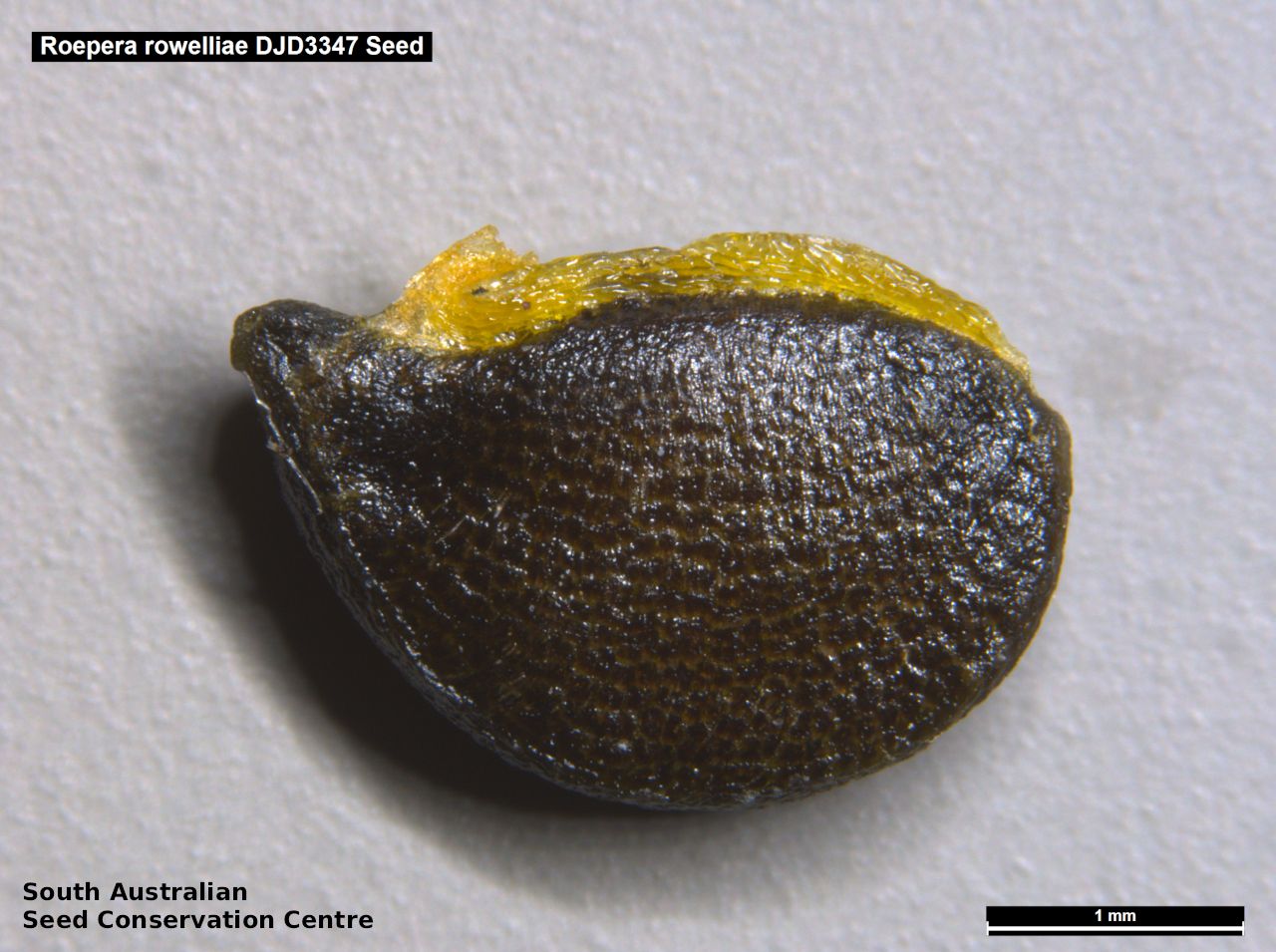
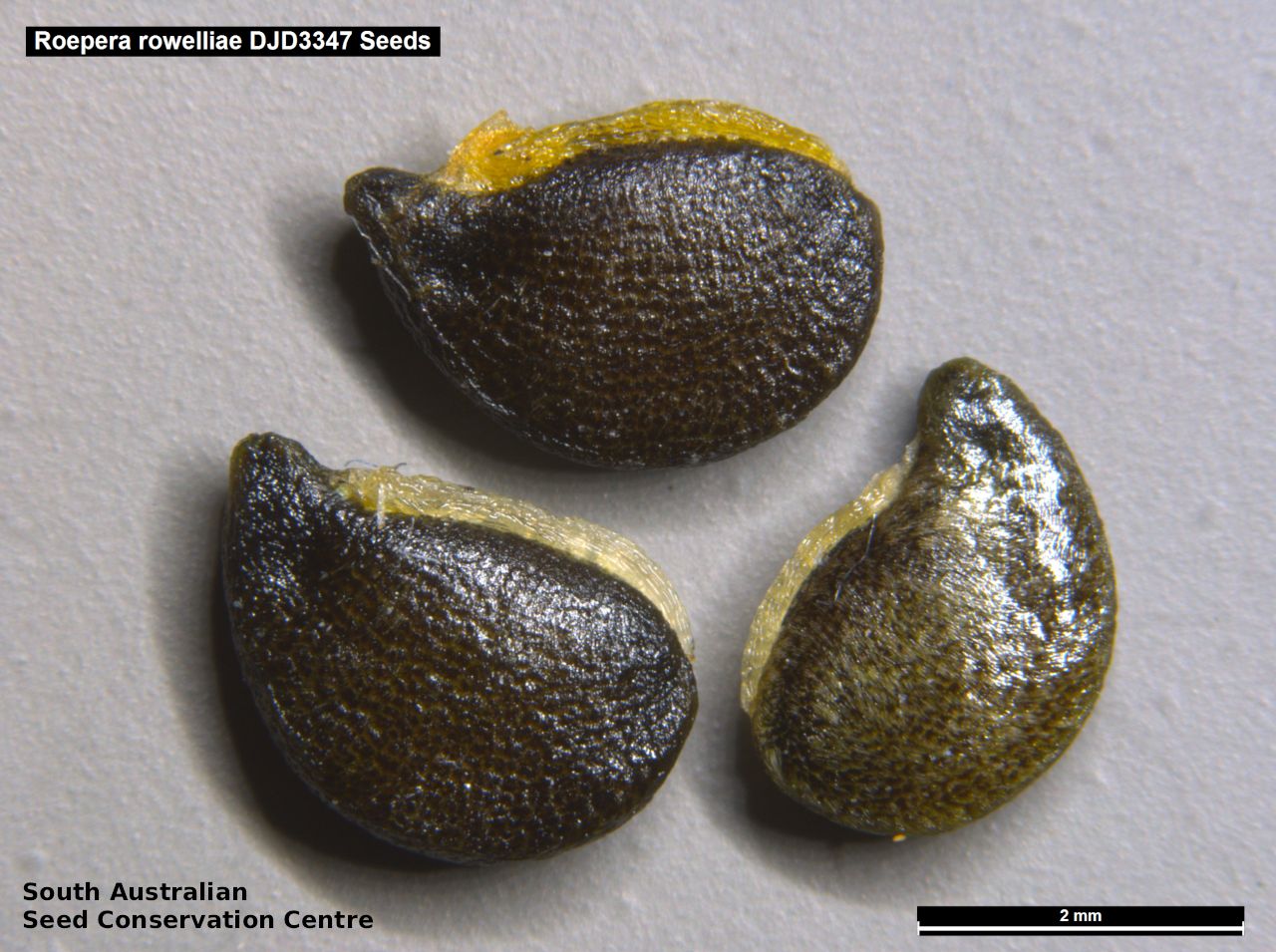

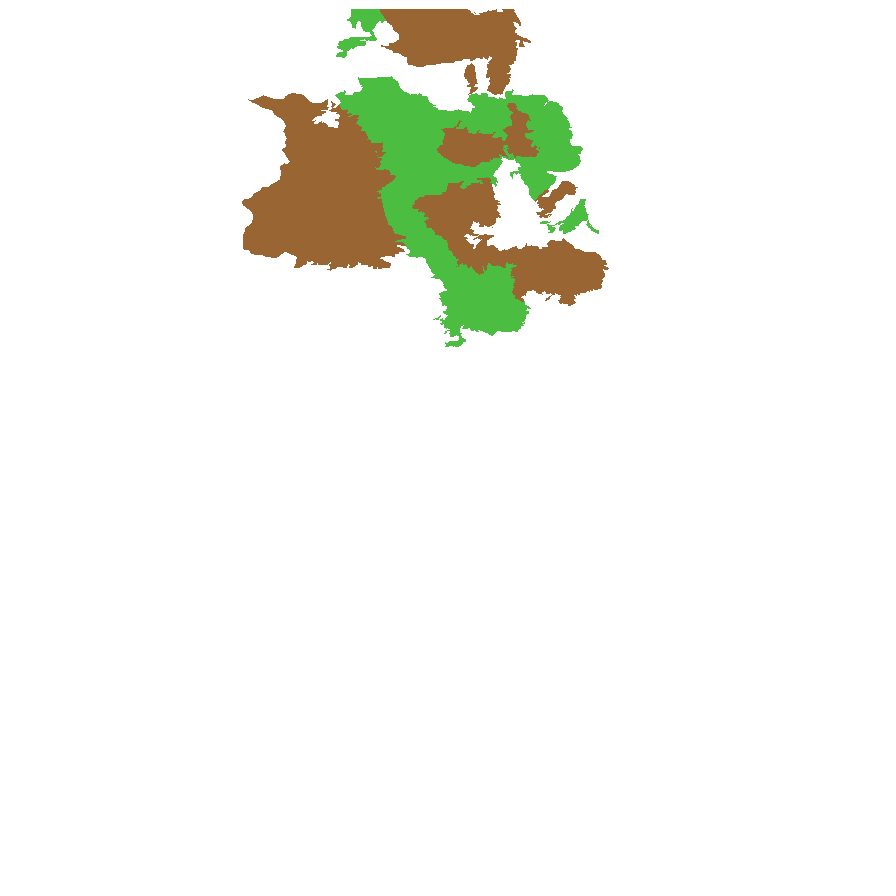
Botanical art
Prior names
Zygophyllum rowelliae
Zygophyllum iodocarpum
Common names
Rowell Twinleaf
Violet Twinleaf
Etymology
Roepera (formally Zygophyllum which is from the Greek 'zygon' meaning pair and 'phyllon' meaning leaf; referring to the pair of leaflets making up each leaf) is named after Johannes August Christian Roeper (1801 -1885), a German botanist and physician. Rowelliae named after Alison Rowell, who assisted Hansjoerg Eichler with his work on Zygophyllum and many of the notes within the Eichler manuscripts were made by her.
Distribution and status
Found in the central northern part of South Australia, growing in breakaways often in gravelly soils. Also found in the Northern Territory and Queensland. Native. Uncommon in South Australia. Uncommon in the other states.
Herbarium regions: North Western, Lake Eyre
AVH map: SA distribution map (external link)
Plant description
Erect initially then becoming decumbent and spreading, annual herb to 25 cm high, glabrous. Leaves succulent, ovoid Y-shaped, to 25 mm long and 14 mm wide, articulated from the stem. Inflorescence paired at each node with yellow flowers. This species is closely related to Roepera iodocarpa and is distinguished from it by the somewhat larger flowers and the longer style with undivided stigma, visible in both flowers and fruits. Flowering between April and October, probably dependent on rain. Fruits are pale brown, elliptical capsule to 5 mm long, with 5-angles and 5-cells, rounded at apex, with 1-2 seeds per cell. Seeds are dark brown to black tear-shaped to 2.5 mm long and 1.7 mm wide, with a slightly wrinkled surface. Seed embryo type is spatulate fully developed.
Seed collection and propagation
Collect seeds between June and December. Collect semi-dried and dried capsules by running your hands through the stems of the plant. Mature fruits will come off easily and will have a hard and dark seed inside each segment. Place the capsules in a tray and leave to dry for 1 to 2 weeks, depending on how green the fruit is. Then rub the dried capsules to dislodge the seeds. Use a sieve to remove the unwanted material. Store the seeds with a desiccant such as dried silica beads or dry rice, in an air tight container in a cool and dry place. Seed viability is usually high.